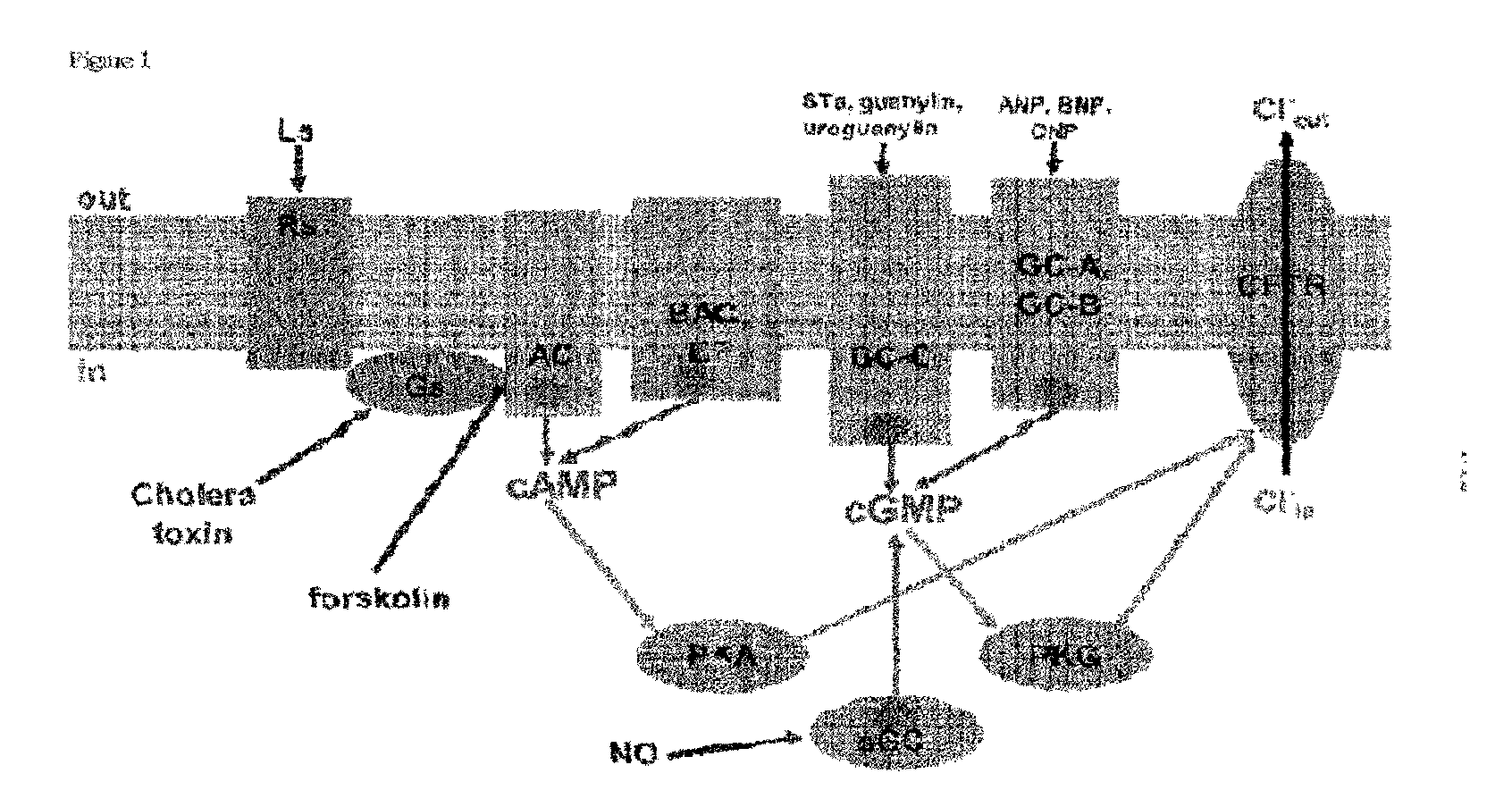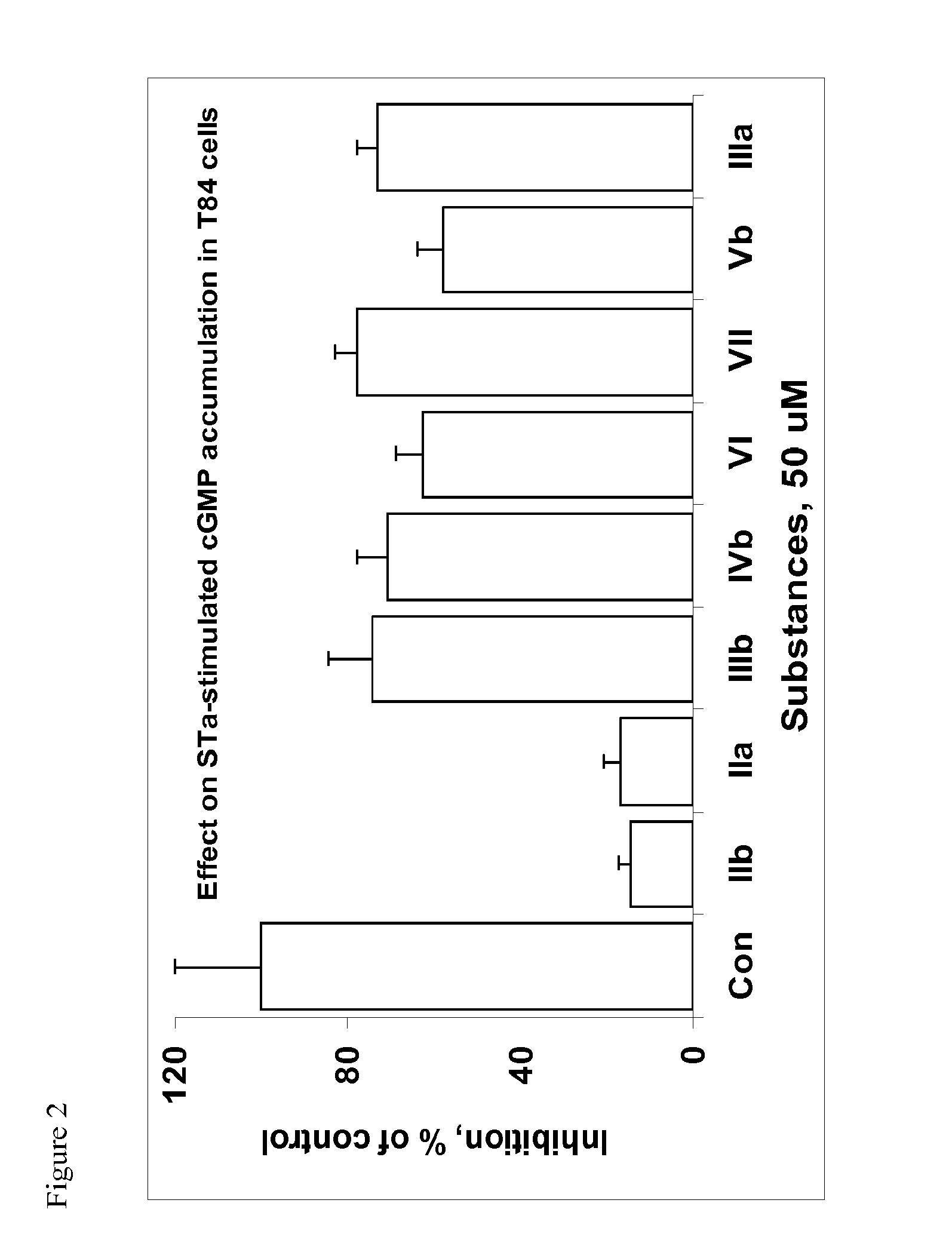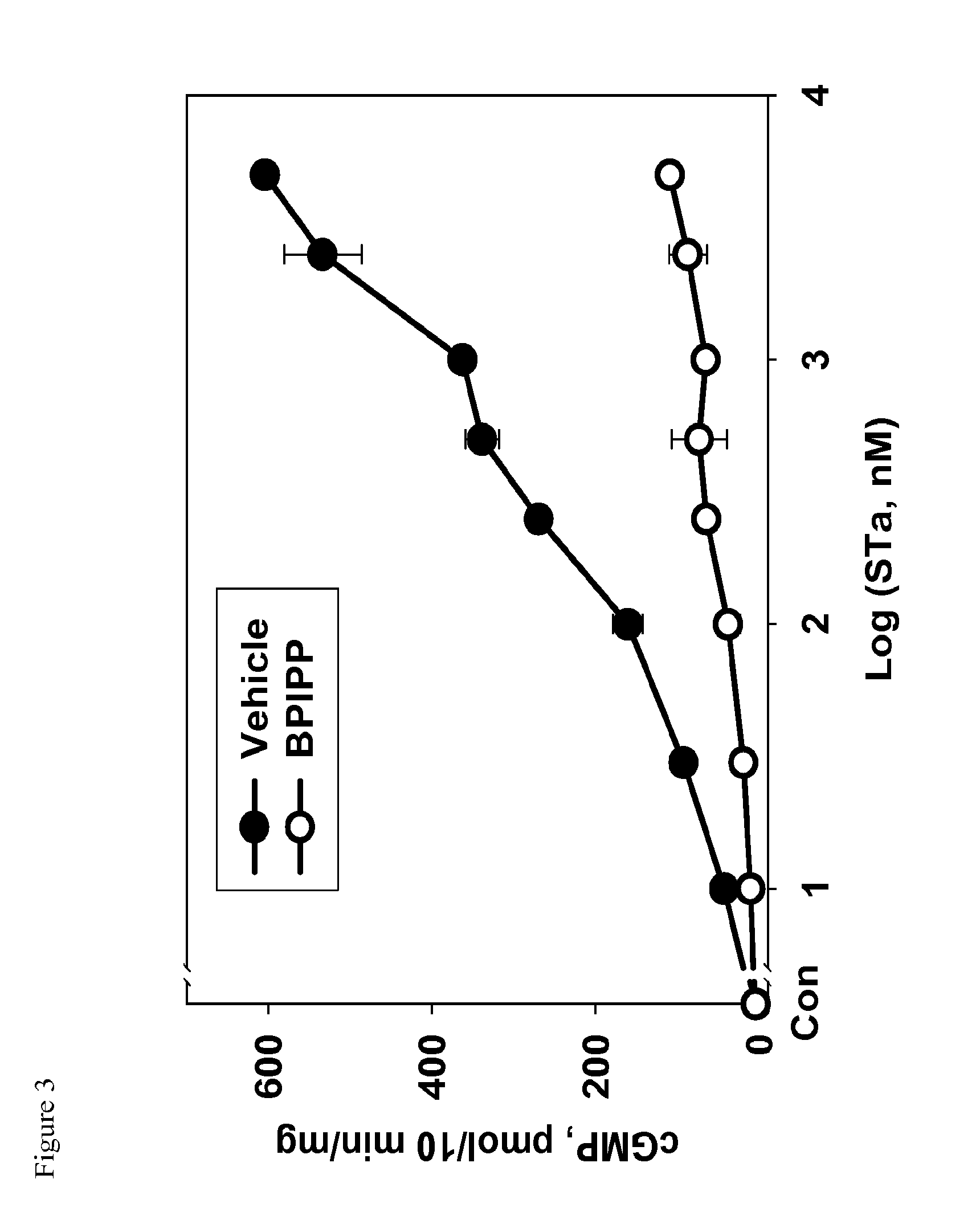Inhibitors of Cyclic Nucleotide Synthesis and Their Use for Therapy of Various Diseases
a cyclic nucleotide and inhibitor technology, applied in the field of medicinal chemistry, can solve the problems of increasing the intracellular amount of cyclic nucleotides, increasing the accumulation of electrolytes and water in the intestinal lumen, and significant economic loss for farmers and ranchers, so as to reduce the toxicity, shorten the treatment time, and achieve more reversible effects
- Summary
- Abstract
- Description
- Claims
- Application Information
AI Technical Summary
Benefits of technology
Problems solved by technology
Method used
Image
Examples
examples
1. Compounds Tested.
[0090]The compounds were purchased from ChemDiv, Inc., San Diego, Calif. Compounds of interest are shown in Table 1.
TABLE 1IDFormulaIIaIIbIIIaIIIbIVbVbVIVII
2. Inhibition of STa-Induced Activation of GC-C in T84 Cells.
[0091]T84 cells were grown in 12-well plates to confluency at 37° C. in a humidified atmosphere containing 5% CO2 and the medium was replaced with 0.5 ml of phosphate buffered Dulbecco's solution (DPBS) containing 1 mM 3-isobutyl-1-methyl xanthine (IBMX) and vehicle dimethylsulfoxide (DMSO) at concentration 0.1% v / v or containing compound IIb at concentration 50 μM. Cells were incubated for 10 min at 37° C. and treated with or without STa (100 nM final concentration). After 10 min incubation, medium was aspirated and cyclic GMP was extracted by addition of 0.3 ml 50 mM sodium acetate buffer, pH 4.0, and rapid freezing at −80° C. Plate was thawed and contents of cyclic GMP were assayed in the extract using enzyme-linked immunosorbent assay developed a...
PUM
| Property | Measurement | Unit |
|---|---|---|
| Toxicity | aaaaa | aaaaa |
Abstract
Description
Claims
Application Information
 Login to View More
Login to View More - R&D
- Intellectual Property
- Life Sciences
- Materials
- Tech Scout
- Unparalleled Data Quality
- Higher Quality Content
- 60% Fewer Hallucinations
Browse by: Latest US Patents, China's latest patents, Technical Efficacy Thesaurus, Application Domain, Technology Topic, Popular Technical Reports.
© 2025 PatSnap. All rights reserved.Legal|Privacy policy|Modern Slavery Act Transparency Statement|Sitemap|About US| Contact US: help@patsnap.com



